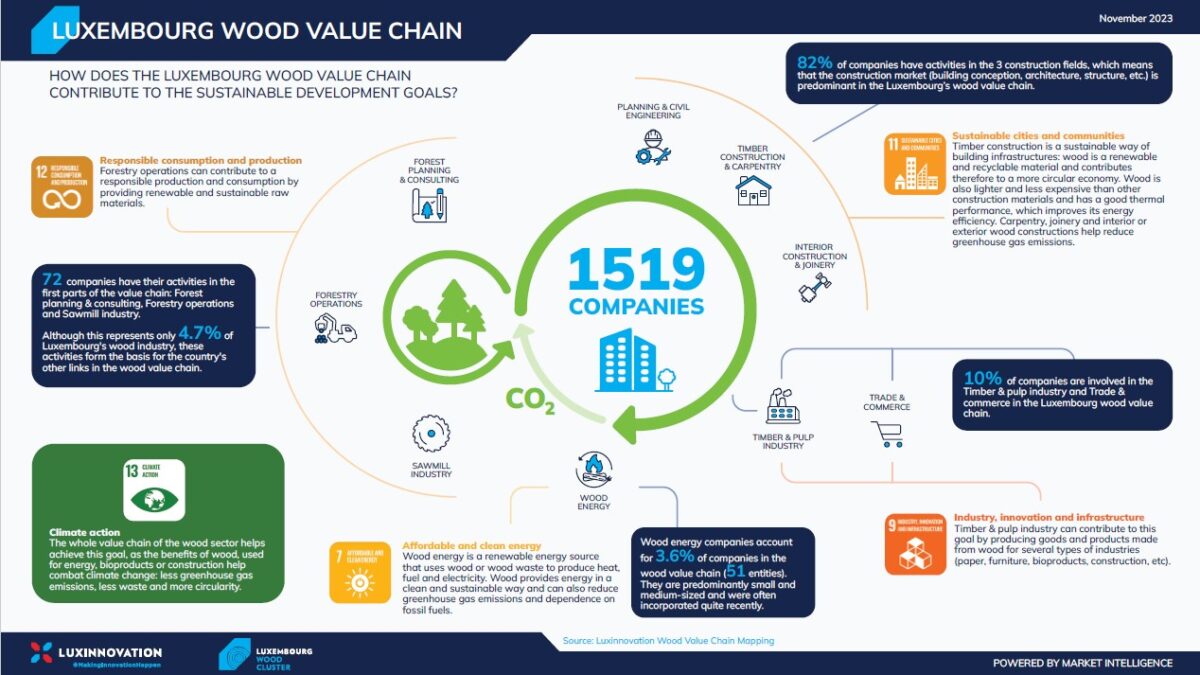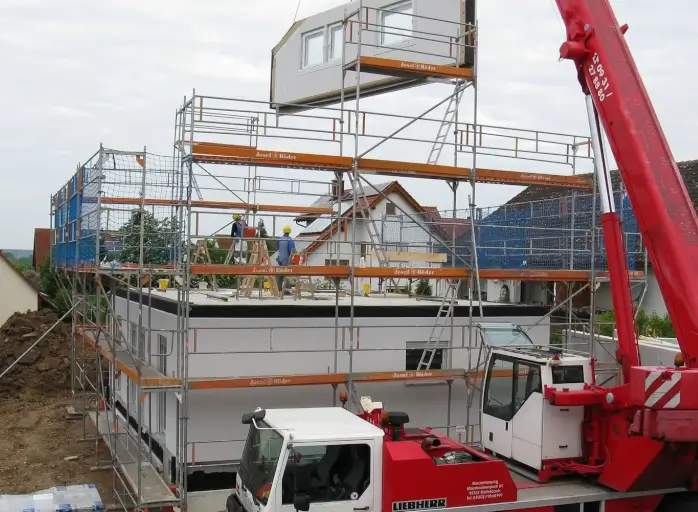

Luxembourg wood value chain (3/3): Advancing sustainable development goals
A deep dive into the wood ecosystem mapping produced by Luxinnovation shows how Luxembourg’s wood value chain contributes to the UN’s sustainable development goals.
 Lena Mårtensson
Lena Mårtensson
Climate crisis, energy crisis, lack of raw materials… We are constantly inundated by news emphasising the need for sustainability in all aspects of society. Therefore, when releasing its 2023 edition of the Luxembourg wood ecosystem mapping, the Luxinnovation team did an additional study on how the wood value chain contributes to several of the 17 sustainable development goals (SDGs) defined by the United Nations.
Contributions to five sustainable development goals
In order to gain an understanding of how the sector contributes to sustainability, the Luxinnovation team focused on the connections between different parts of the wood value chain and specific SDGs.

“The national value chain is dominated by construction, which involves over 80% of companies,” comments Ralf Köhler, Cluster Manager – Wood at Luxinnovation. “Timber construction is more sustainable than many other building methods: wood is a renewable, recyclable and energy-efficient material. In this way, the sector makes a considerable contribution to SDG 11: Sustainable cities and communities.”
10% of companies are active in the timber and pulp industry or in trade and commerce activities. By producing goods and products made from wood and replacing other materials that cause higher greenhouse gas emissions, they contribute to SDG 9: Industry, innovation and infrastructure.
The sector makes a considerable contribution to SDG 11: Sustainable cities and communities.
By providing renewable and sustainable raw materials, companies at the earliest stages of the wood value chain – forest planning and consulting, forestry operations and sawmill industry – contribute to SDG 12: Sustainable consumption and production. The activities of the country’s wood energy companies are strongly linked to SDG 7: Affordable and clean energy, as they provide a renewable energy source and help to reduce the dependence on fossil fuels.
“On top of this, the entire wood value chain help achieve climate action (SDG 13) by providing solutions resulting in limited greenhouse gas emissions, less waste and more circularity,” says Luxinnovation Market Intelligence Analyst Julie Gaspar.
Cascading use of wood: a highly sustainable approach
An additional benefit of wood from a sustainability perspective is its ability to be reused several times. According to the European Commission, this so-called cascading use of wood takes place when “wood is processed into a product and this product is used at least once more either for material or energy purposes”.
The combustion of wood is climate-neutral and almost a zero-sum game with regards to the emission of climate-relevant CO2.
“Take, for example, wood that is used in a timber building. This is already climate-friendly: wood stores CO2 and contributes to carbon reduction in the otherwise energy-intensive construction sector,” Mr Köhler points out. “Once the building is demolished, construction timber can in many cases be reused. And once it reaches the end of its lifetime, it can be used for energy. The combustion of wood is climate-neutral and almost a zero-sum game with regards to the emission of climate-relevant CO2.”







